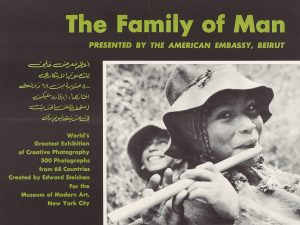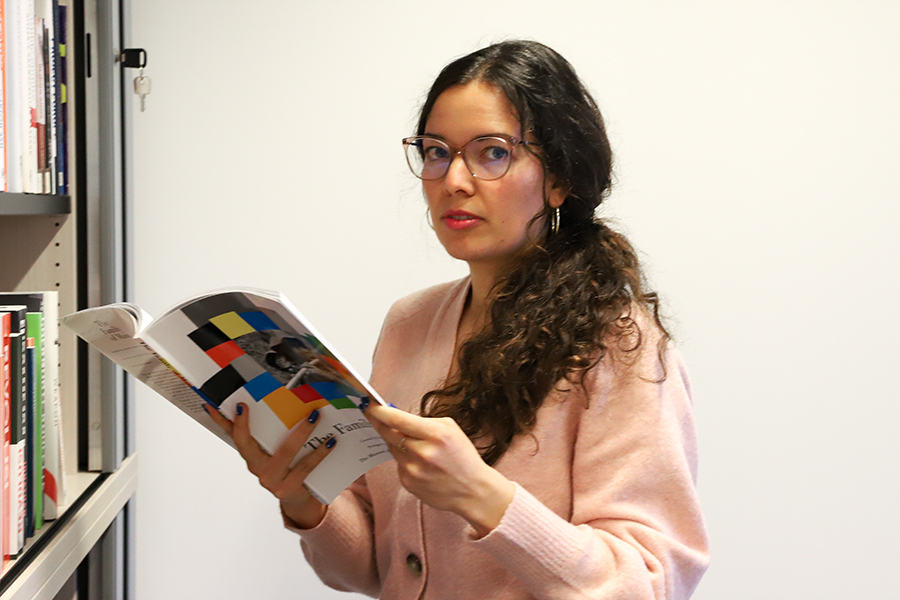Undigitized archives are often invaluable treasure chests of information—a wrinkled, stained file, with the fading ink of an official stamp, can reveal secrets that had been classified for years and tell captivating stories.
A new research project at the C²DH traces the fascinating journey of “The Family of Man,” or “the greatest photographic exhibition of all time.” This remarkably confident claim and prophecy appeared on the cover of its accompanying book catalog. The phrase was also widely reproduced in printed media from Miami to Montevideo and Berlin to Beirut as the exhibition embarked on an eight-year world tour following its premiere at New York’s MoMA. The exhibition fulfilled its expectations, attracting over 9 million visitors and earning it the accolade of “the most visited photographic exhibition in history.” It also captured the interest of academics and artists, who have continually reinterpreted, challenged, and localized its theme for the past 70 years, earning it yet another praise as “the most researched exhibition of photography.”
Nevertheless, few studies have focused on the life of “The Family of Man” beyond the United States and Europe, when it was utilized as an object of foreign diplomacy and strategically displayed in Africa, Asia, and Latin America. This journey lies at the center of my PhD dissertation as I piece together stories of Cold War cultural diplomacy, photographic legacies, and the role of exhibitions in peace advocacy.
January 2025 kicked off the on-site archival research phase of the project and sent me on a trip to three core locations outside of Luxembourg: The George Eastman Museum, the Museum of Modern Art (MoMA), and the U.S. National Archives, to determine the way forward in the project.
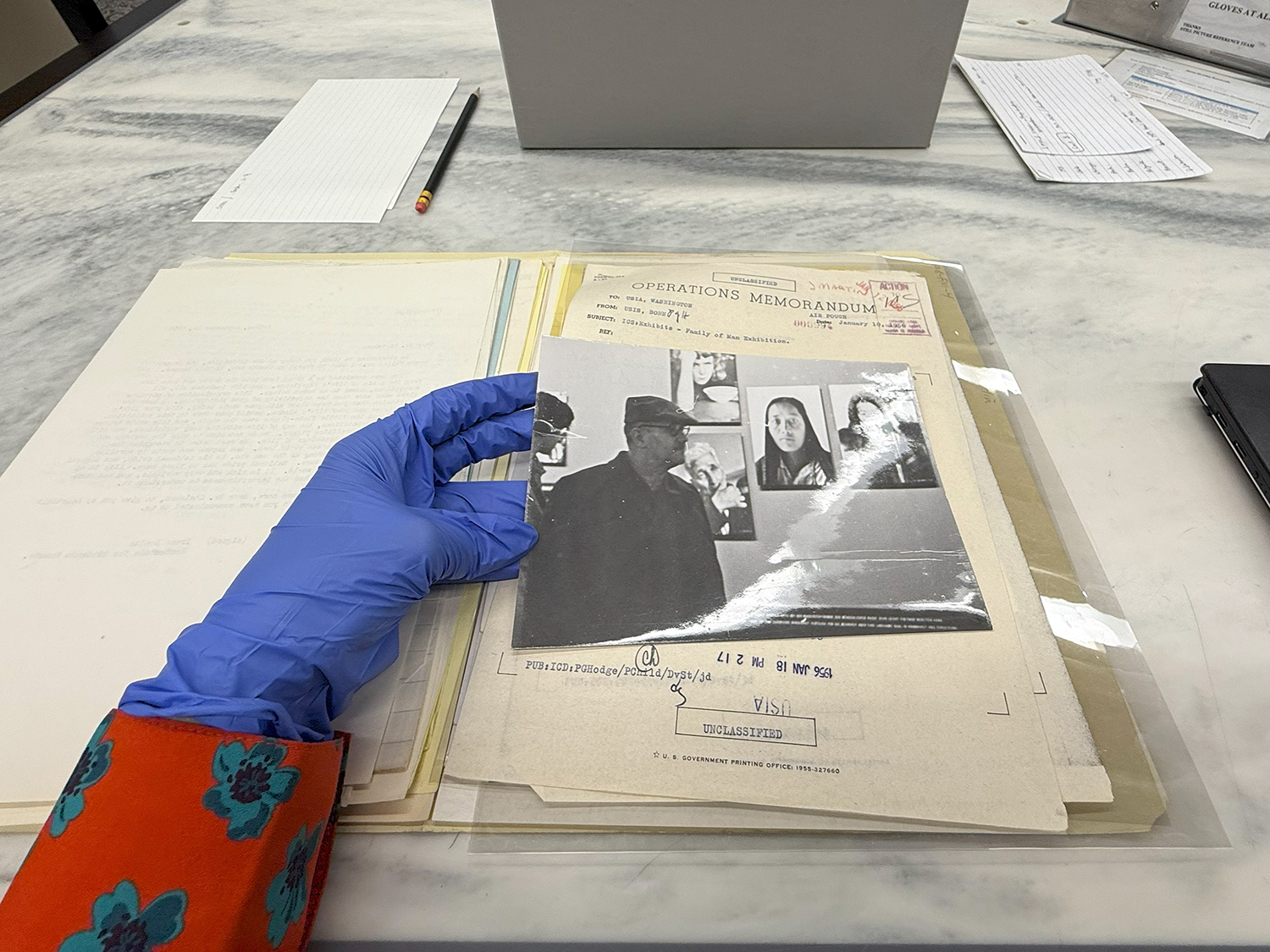
German playwright and poet Bertolt Brecht crosses from East Berlin to visit “The Family of Man” exhibition at the Hochschule für Bildende Künste in West Berlin, Germany. 1955. Records of the U.S. Information Agency. Courtesy National Archives, photo no. 306-FM-3.
1st stop: George Eastman Museum in Rochester, NY
The former George Eastman House, now a museum, was founded in 1947 and is known as the world’s oldest museum dedicated to photography. It is located on the estate of George Eastman, the visionary founder of Eastman Kodak Company who dedicated his career to making photography accessible to the mainstream public. He is credited with creating roll film and a service that developed the film advertised with the slogan “You Press the Button, We Do the Rest.”
Pioneer figures in the visual industry worked extensively with the George Eastman House as the art and business of photography took off in the United States. Edward Steichen, the Luxembourgish-American curator responsible for conceiving “The Family of Man,” was on the board of trustees. They were instrumental partners in preparing the exhibition and also hosted it in 1956, allowing them to collect valuable records related to its beginnings and evolution. Some documents I found here included correspondence with MoMA, checklists for installing the traveling panels, invitations to the inaugural ceremony in Rochester, and drafts of Steichen’s opening speech.
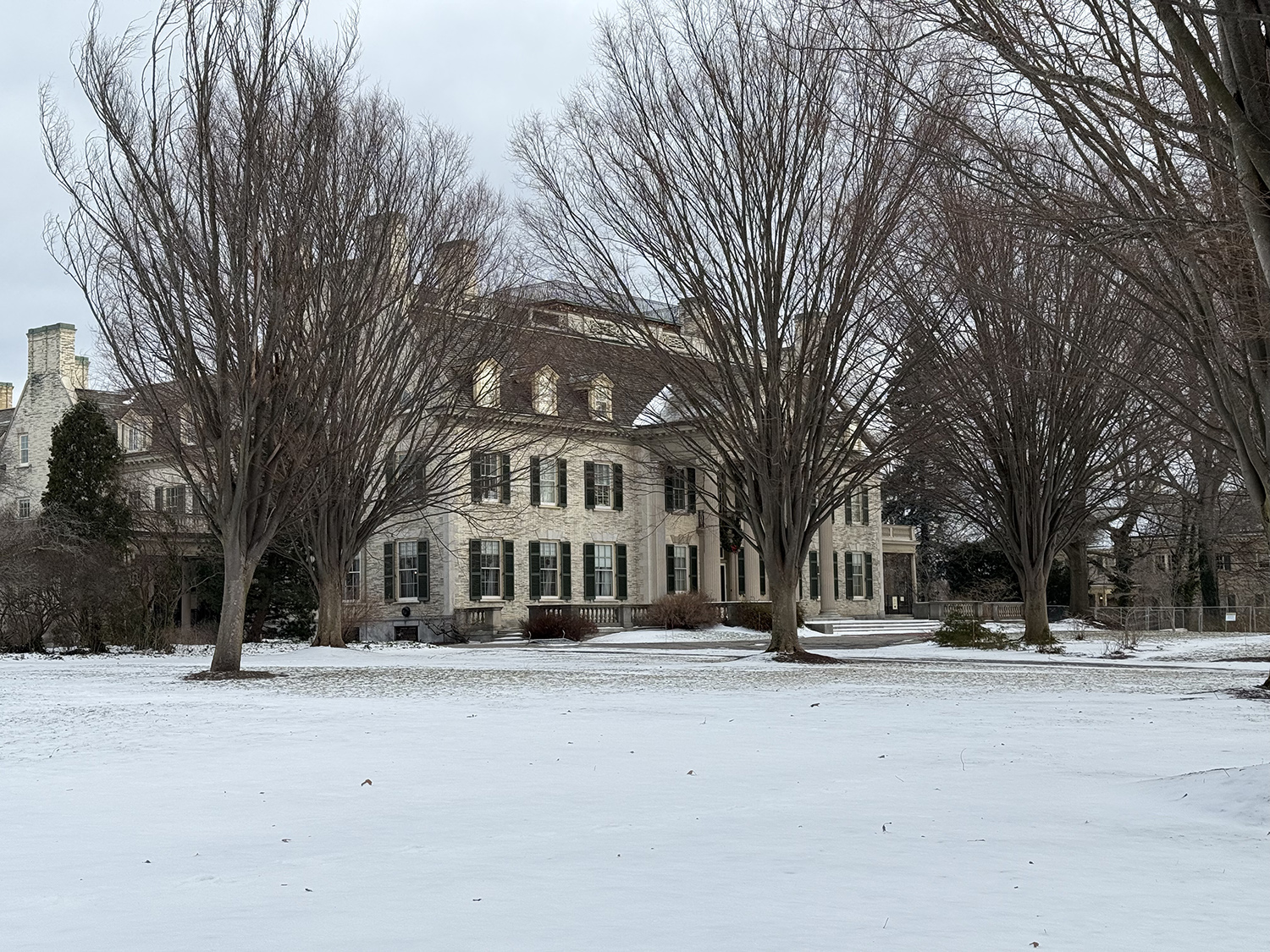
Exterior of the George Eastman Museum in Rochester, New York
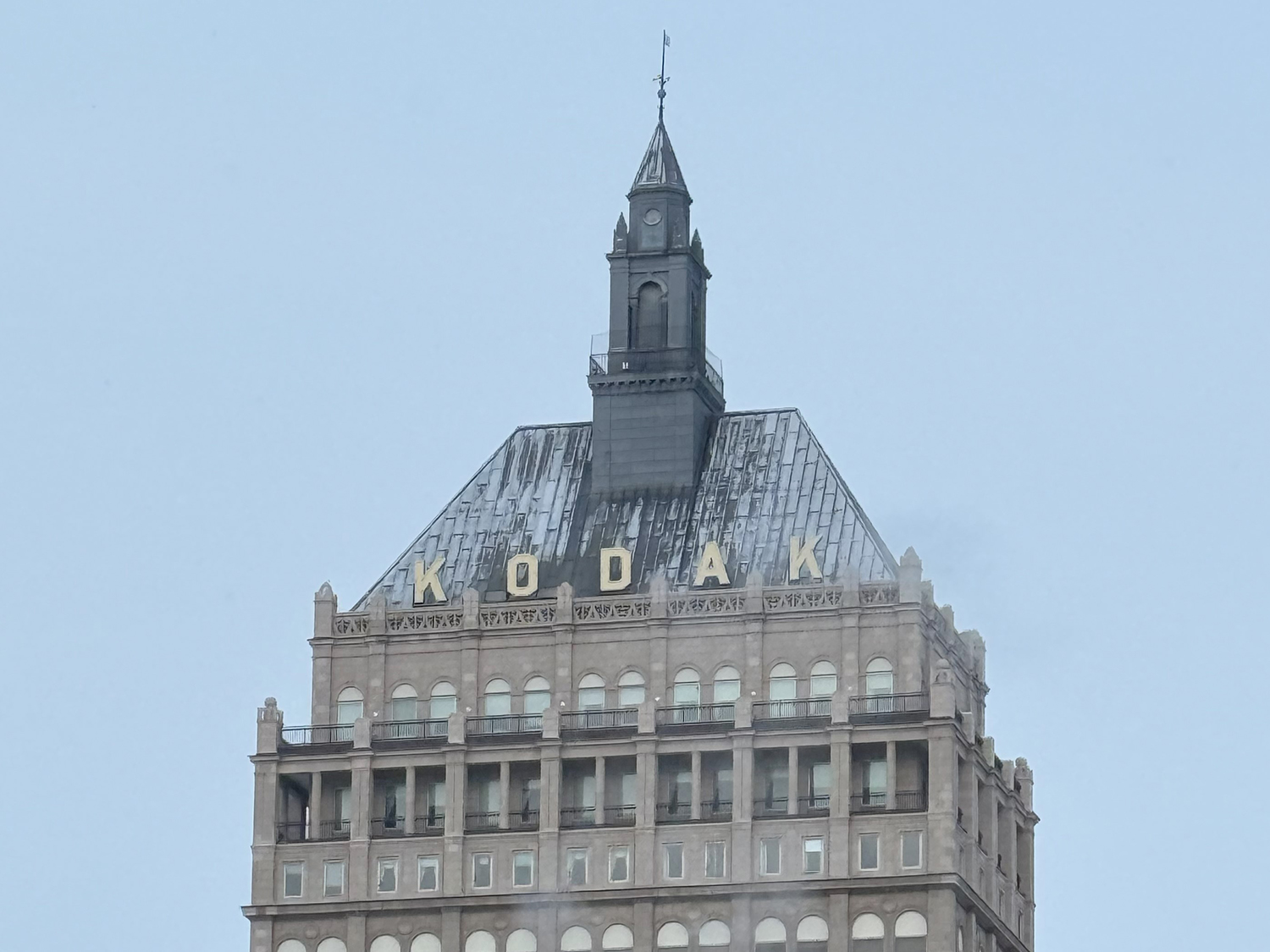
Kodak Tower in Rochester, New York
As a researcher in both art and history, I like to compare the feeling of browsing through original documents with the experience of seeing an artwork in person for the first time and talking with people who experienced the historical events, as meeting the artists. While perusing documents, I met Ken Fox, the Head of Library and Archives, who is too young to have seen the exhibition on tour but grew up with the book at home. He told me,
“It was the only photography book we had at home. My father probably had no idea it came from an exhibition but he had it on display in the living room and would sometimes use it to teach us life lessons. He was pretty conservative, but placing The Family of Man book on the coffee table showed guests a different side of him which embraced diversity.”
2nd stop: MoMA Archives in New York City
The trip continued at the Museum of Modern Art (MoMA) in the heart of Manhattan, a mandatory stop as the institution responsible for the genesis of “The Family of Man.” Their exhibition files provide extensive and detailed accounts of the day-to-day process of assembling the exhibition, communicating by mail with the over 250 photographers (or their agencies) included in the show, and planning its national and international itinerary to over 150 cities. What a mighty logistical feat to have done this in the 50s and 60s!
Continuing the research journey, it was a freezing week on the American East Coast, but I was happy to find refuge indoors with my boxes of records. Each morning, I would grab a sandwich from a deli, walk up 5th Avenue, turn west on 54th Street to reach the MoMA Library and Archives
Building, and settle at my designated spot in the study room. One day, I would dedicate to the International Council and International Program Records, another to letters, lists, and newspaper clippings from personal archives, then to the chronological exhibition records, and so on and so forth.
Every new box, every folder, every turn of the page is an opportunity to learn new information.
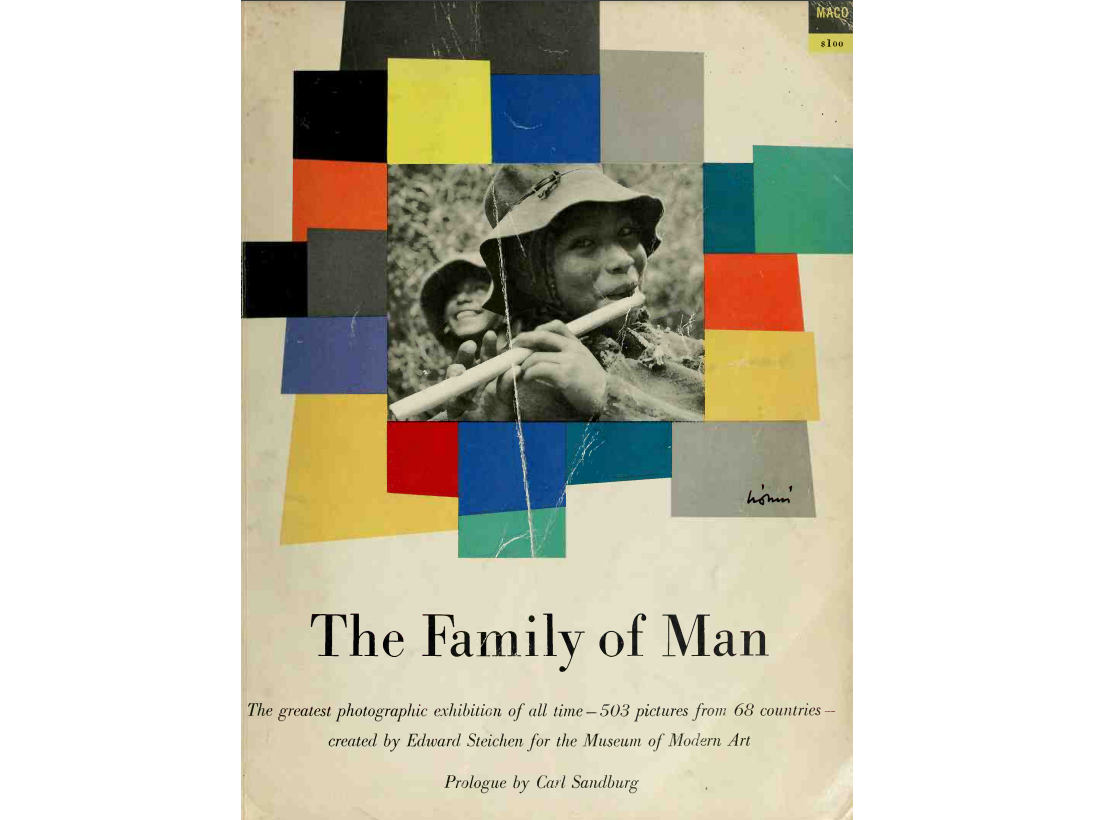
Softcover book catalogue of “The Family of Man” published by Maco Magazine Corporation for MoMA in 1955
3rd stop: The U.S. National Archives and Records Administration in Washington, D.C.
My journey came to a close at the National Archives, where I would dive into the sea of reports conducted by the United States Information Service (USIS). Established by President Dwight D. Eisenhower for foreign diplomacy during the Cold War, the USIS operated out of U.S. embassies worldwide. They hoped that by incorporating “The Family of Man” into their cultural program, international audiences would associate the humanist and peaceful values of the exhibition with the United States. For this end, they took to organizing a World Tour and providing detailed reports of its successes, failures, and influence abroad. Unfortunately, not all records made it back to Washington or were lost to the passing of time, so my main task at the archives was to rescue any information that was still kept.
The USIS records are hosted in College Park, Maryland, just outside D.C. — fortunately, made accessible by a free shuttle service from their downtown location. This was the largest institution I visited, jumping between the departments of Motion Pictures, Stills, and Textual Records.
The archives were not only useful for the dedicated reports on “The Family of Man” showings, but also for the USIS surveys on public opinion, summaries of other exhibitions planned by the same offices, and studies of the media landscapes at various locations.
As I continue to analyze the many files on my computer after this initial research trip, the complex itinerancy of “The Family of Man” begins to take shape — often literally picture by picture.
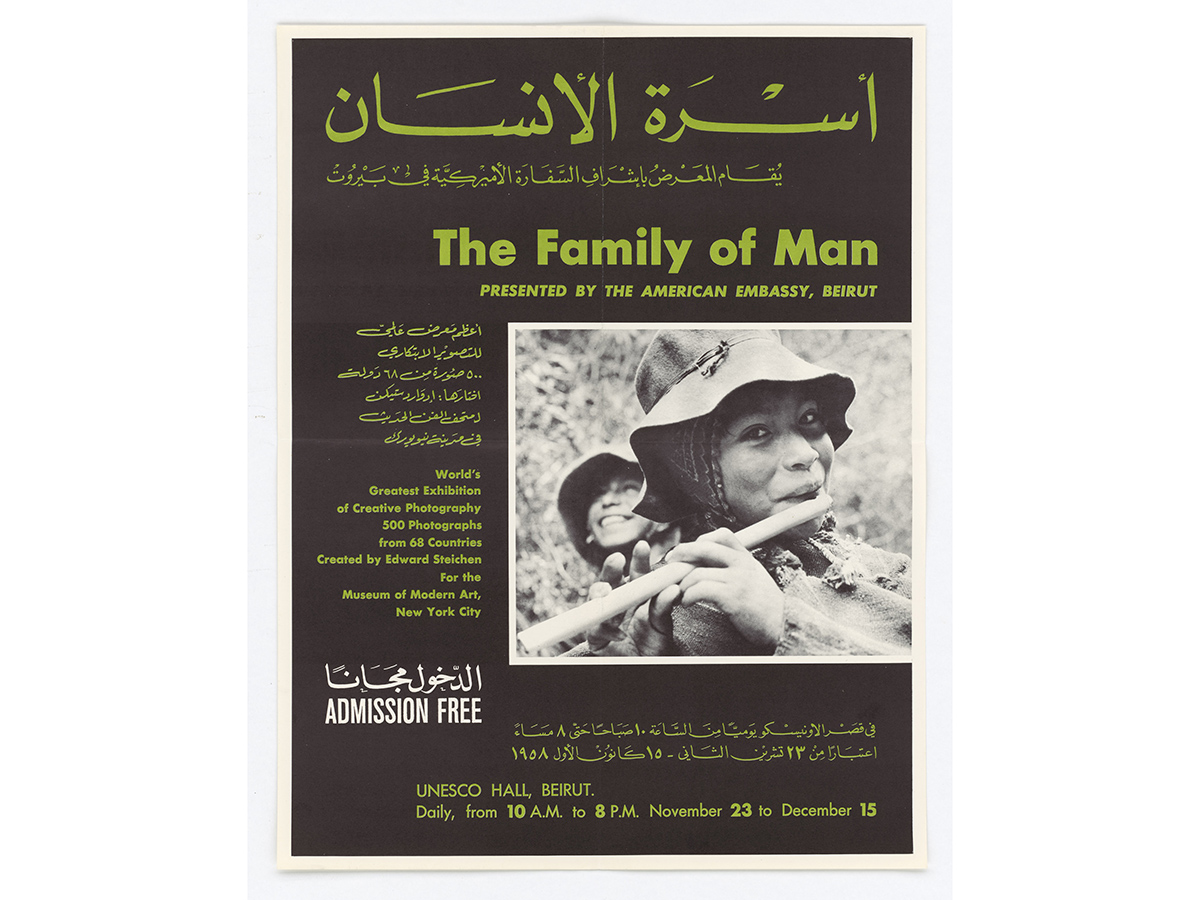
Exhibition poster for “The Family of Man” in Beirut, Lebanon, 1958. Courtesy National Archives, no. 306-PPB-7
